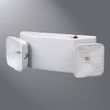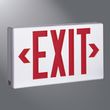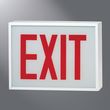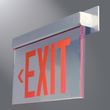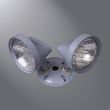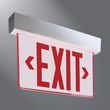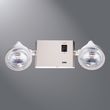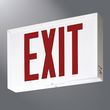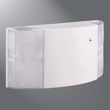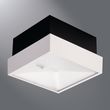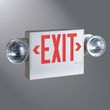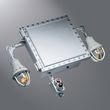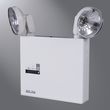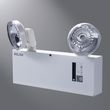Emergency Signage
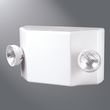

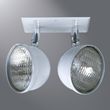
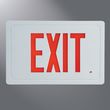
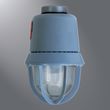
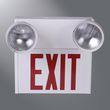
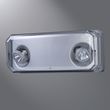

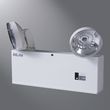
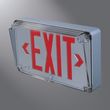

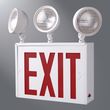


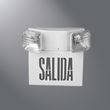






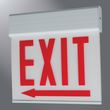

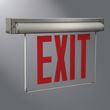
CMFP provides the solutions to building owners and facility managers by testing, documenting, repairing, and installing emergency lighting and exits signs. Give us a call or continue reading for more information.
Fire Signs & Exit Signs
Fire signs and exit signs display information that tell people where they should go during fires and other emergencies. CMFP offers various fire extinguisher signs, fire sprinkler signs, evacuation signs and other fire and exit signs that show everyone the shortest and quickest route to exit your facility. Our fire and exit signs come in many different designs that are made to meet your specific needs. We can provide you with glow in the dark stairwell signs, illuminated fire and exit signs and a variety of fire extinguisher signs.
Emergency Lighting
Functioning emergency lights are required to comply with state building and fire codes, insurance standards, and even OSHA standards. The Exit Light Company offers cost-effective, energy efficient emergency lights to meet a variety of applications including:industrial emergency lighting, high end architectural emergency lights, remote capable emergency lighting, recessed installation emergency lights, and wet location emergency lighting.
Exit Signs & Egress illumination
In case of fire, exit signs can save lives. Exit Sign / Emergency Light Combos provide the functionality of egress signage (“exit signs”) with emergency egress lighting in one easy to install unit. All combination fixtures are required to have a battery backup to keep the exit sign internally illuminated and the egress lighting functioning for a minimum of 90 minutes in the event of a power failure.
City of Chicago approved Signage
Quality emergency lighting products save lives and property, placing significant weight on the selection or specification of these luminaires for any facility. Selecting a partner for these products is an equally important decision, especially in a market with specific local code requirements, like Chicago.
Annual Testing
Exit Signs and emergency lighting are vital lifelines in crisis situations. Schools, offices, hotels and virtually every building rely on emergency lighting systems to protect occupants.CMFP provides the solutions to building owners and facility managers by testing, documenting, repairing, and installing emergency lighting and exits signs. Give us a call today for more information.
Unfortunately, emergency lighting equipment is often installed and forgotten. Despite numerous codes requiring routine testing and documentation –NFPA 101 and National Electrical Code to name a few –mandated testing of emergency lighting units remains a “hit or miss” proposition.
Most emergency lights installed in businesses are simple lighting devices that contain a small battery. The device is connected to the building’s electrical supply, which provides a constant charge to the battery. In the event of a power failure, circuitry in the fixture activates the lights, so that occupants can see to exit the building.
Exit signs that are internally lighted operate in much the same way as emergency lights. Because they stay on all the time, many of them have two sets of bulbs. One set, that is normally on, operates on 110 volt building power. The second set, which comes on only when there is a power failure, are low voltage bulbs that operate on the battery only. Therefore, an exit sign that appears to be working normally may not work at all during a power failure, because the low voltage bulbs have burned out.
In some larger buildings emergency power to exit signs and emergency light fixtures is provided by an emergency generator. Testing of emergency lighting in these facilities is normally done at the same time that the generator is tested, and is usually done by either an electrical or mechanical contractor, or by full time building maintenance staff. Contact our office if further information is needed regarding testing of these types of systems.
What type of testing does the fire code require?
The fire code requires that the emergency lights or lighted exit signs be inspected and tested at least once a month. The test must include a thirty-second test of the lights. An annual test is also required, with the lights being operated on emergency power for the full minimum of thirty minutes. Written records documenting the testing must be maintained and available for review by the fire inspector.
Why do I need to test the lights for thirty seconds?
Many defective batteries will maintain just enough charge to fully light up the bulbs for a few seconds, but they will quickly lose power. If you don’t test for thirty seconds you may find that the lights work each month, only to find that they go out in just a few seconds when you really need them. By testing the lights for at least thirty seconds you can make sure the batteries don’t just have this type of “surface charge”.
The CMFP Solution.
Although the vast majority of buildings are in compliance with codes as they relate to the installation of emergency lighting and exit signs, the system falters in the consistent execution of testing, which is critical to ensure fixtures are operable when needed. Within most buildings, the first line of defense in the inspection, testing and repair of emergency lighting systems is building or facilities management. However, these frontline personnel are often overburdened with other responsibilities or are unaware of how to properly test their systems. CMFP provides the solutions to building owners and facility managers by testing, documenting,repairing, and installing emergency lighting and exits signs. Call us today and let us be your solution!
Fire Facts
Perhaps because of Chicago’s history with fires, the Municipal Code of Chicago mandates regulations that exceed the standards of the International Fire Code® and NFPA 101®, Life Safety Code®. These additional regulations only affect the City of Chicago.
- The October 8, 1871 Great Chicago Fire killed 200-300 and devastated 2,000 acres (17,500 buildings) of Chicago, Illinois. 90,000 were left homeless.
- The December 30, 1903 Iroquois Theatre Fire in Chicago, Illinois is the deadliest theatre fire and single building fire in U.S. history. Fire broke out during a matinee presentation of the musical Mr. Bluebeard with a packed house of an estimated 2,000 people. There were not enough exits – some were hard to find, others were locked. At least 605 died, most as a result of being trampled, crushed, or asphyxiated. After the fire, building and fire codes were reformed, and theatres were closed for retrofitting all around the country. All theatre exits had to be clearly marked and the doors situated so that, even if they could not be opened from the outside, they could be pushed open from within.
- The November 13, 1909 Cherry Mine Disaster occurred when fire broke out in the Cherry, Illinois coal mine killing 259 men and boys (some as young as 11). Stronger mine safety regulations were passed as a result of the disaster.
- On December 22, 1910, fire at the Chicago Union Stock Yards resulted in the deaths of 21 firemen and three civilians when the building they were in collapsed.
- The June 5, 1946 La Salle Hotel Fire in Chicago Illinois killed 61, many of them children. The aftermath of the La Salle, Chicago fire and the Winecoff, Atlanta fire later that year, was the enacting of new hotel building codes and fire-fighting procedures in Chicago.
- On December 1, 1958 Our Lady of the Angels School Fire resulted in the deaths of 92 pupils, 3 nuns, and 100 injured at a Roman Catholic elementary school. Smoke, heat, and fire were determined to have cut off normal exit corridors and stairways, and many were killed trying to jump from extra-high 2nd story windows. The story made international news, and sweeping changes in school fire safety regulations were enacted nationwide. Some 16,500 older school buildings in the United States were brought to (then, current) code standards within a year of the disaster.
- The January 30, 1976 Wincrest Nursing Home Fire in Chicago resulted in 23 dead. The building itself sustained only minor damage, but all the fatalities were due to smoke inhalation. Afterwards, the City of Chicago made several improvements to fire safety codes.
Office of Illinois State Fire Marshal
100 W. Randolph Street
Suite 4-600
Chicago, IL. 60601
Phone: 312-814-2693
Fax: 312-814-3459
Web: http://www.sfm.illinois.gov/

